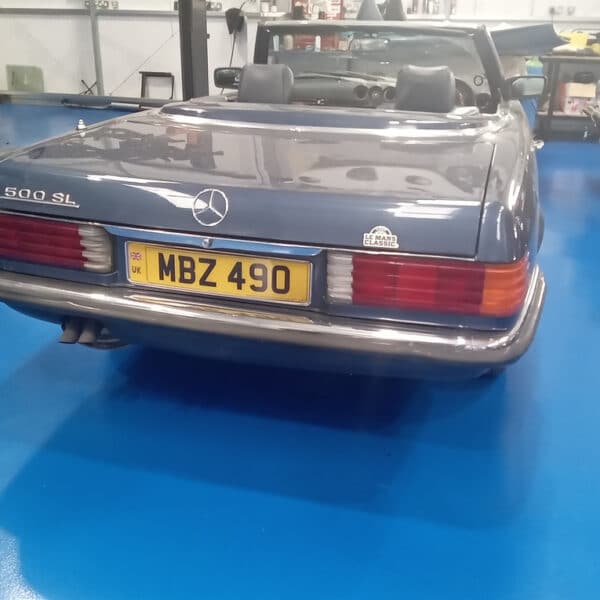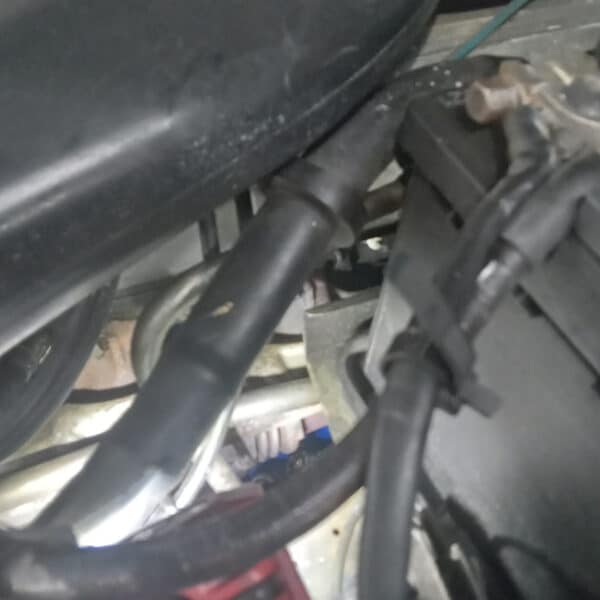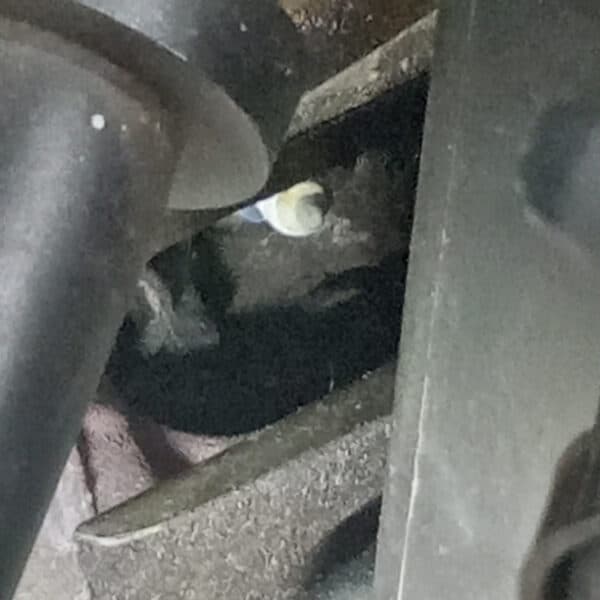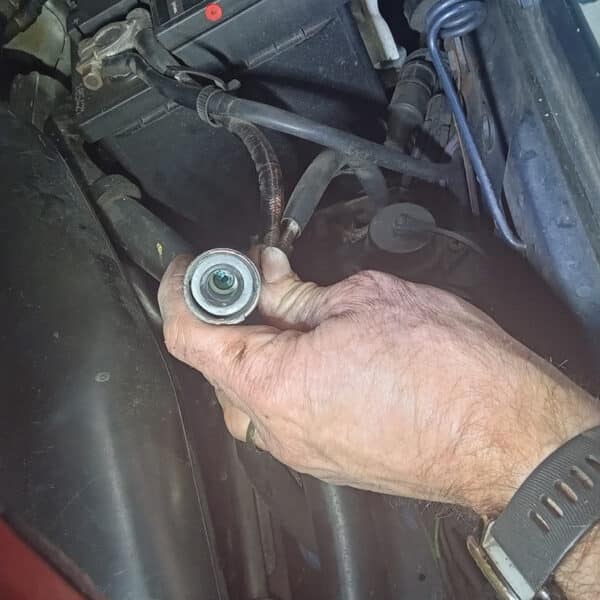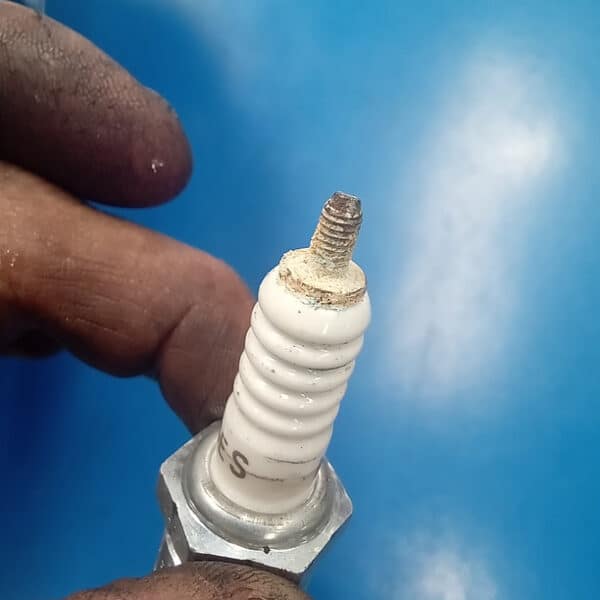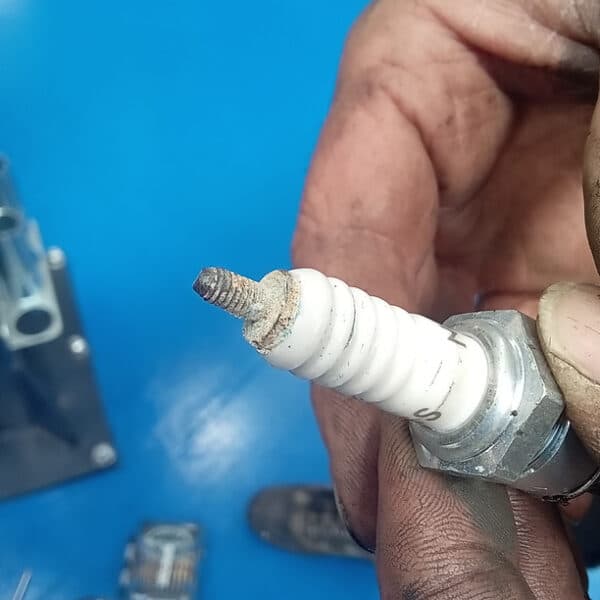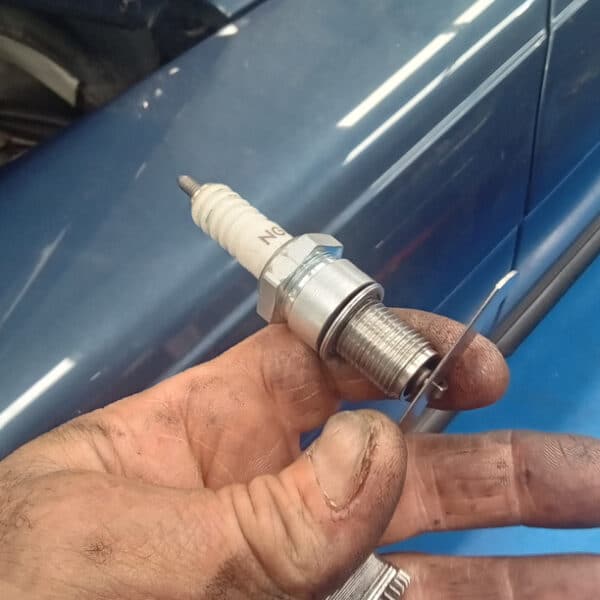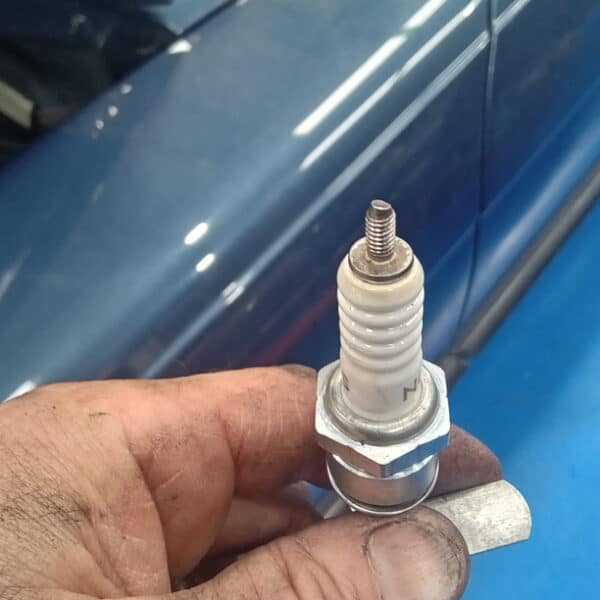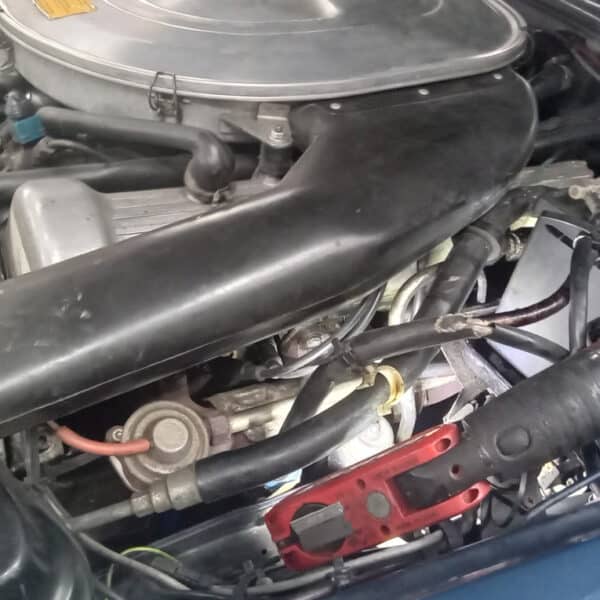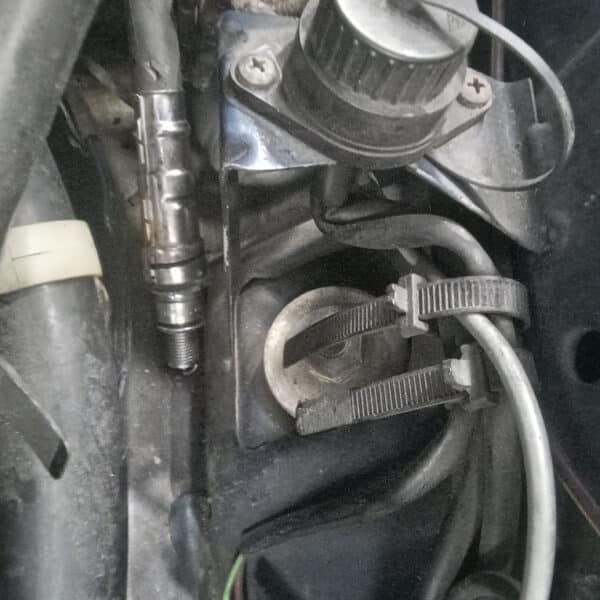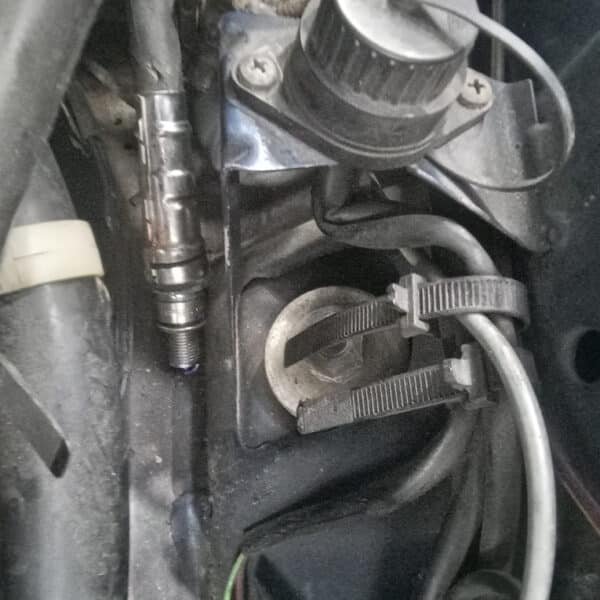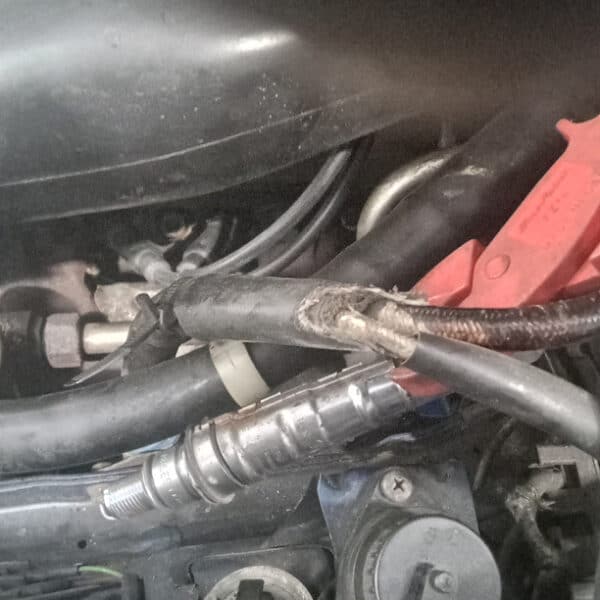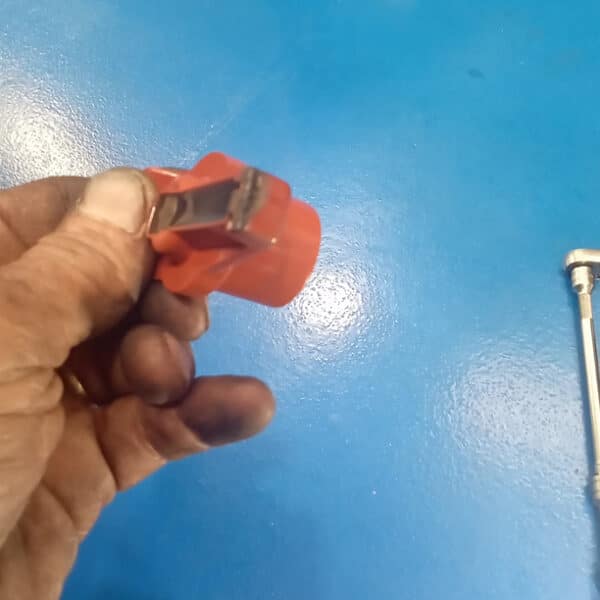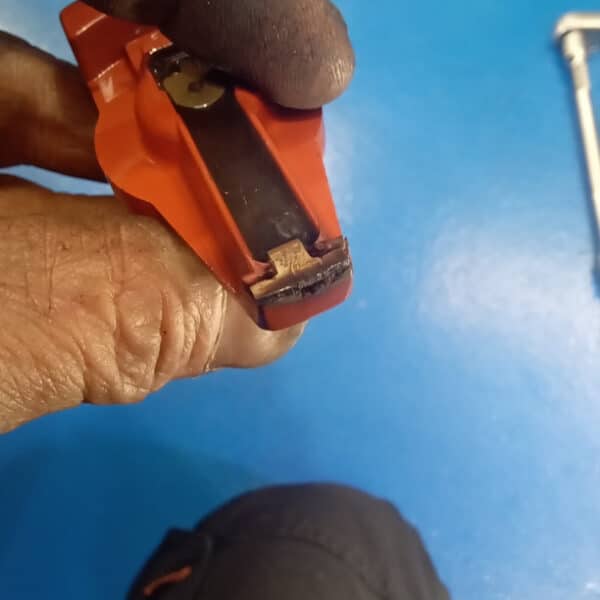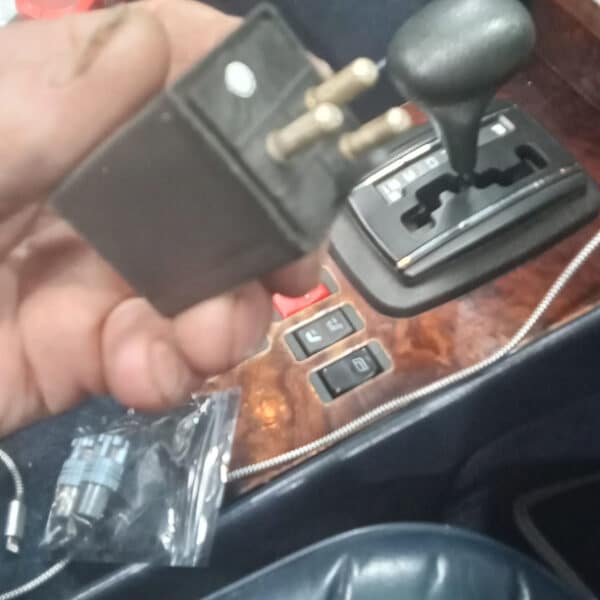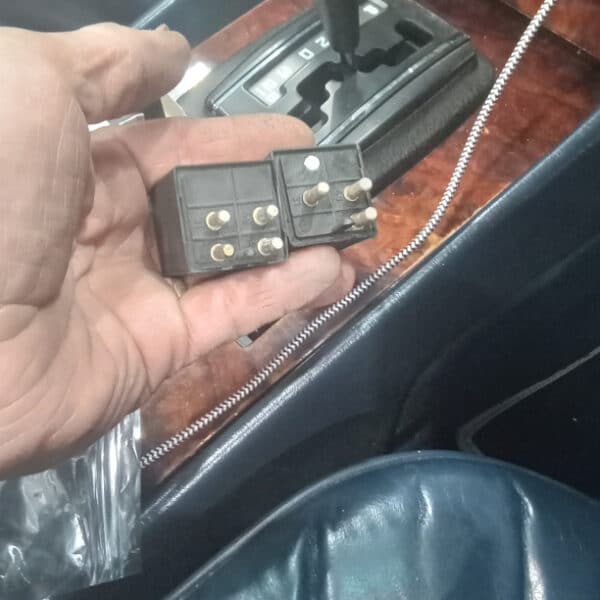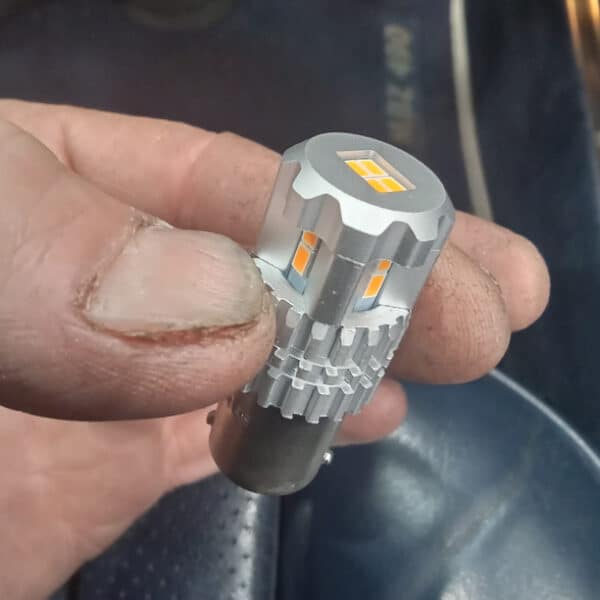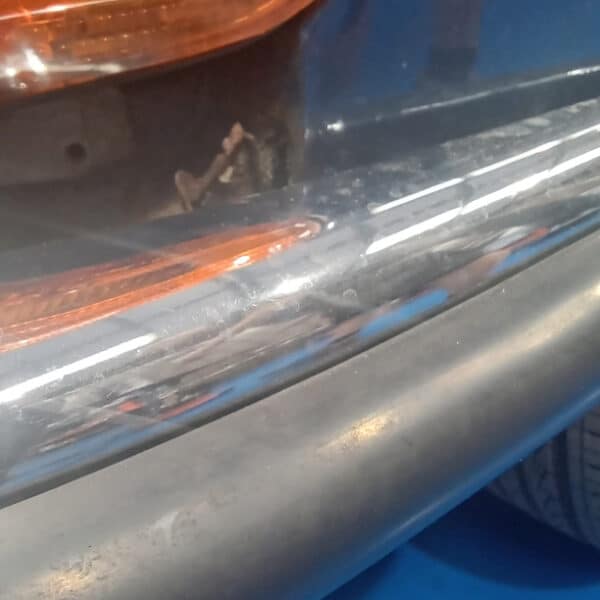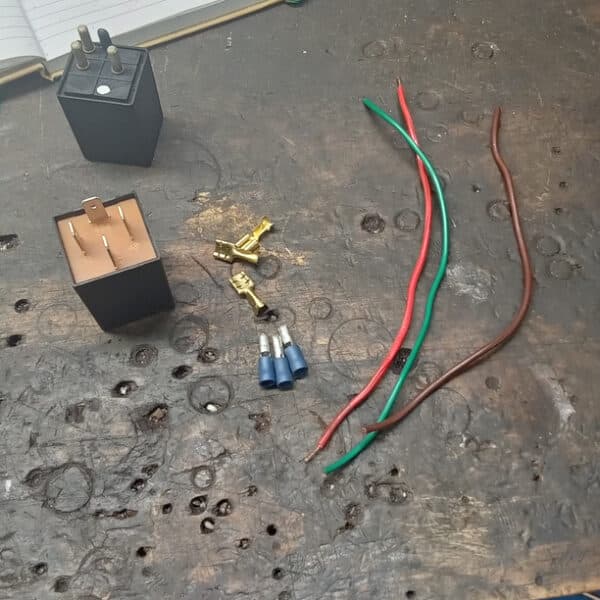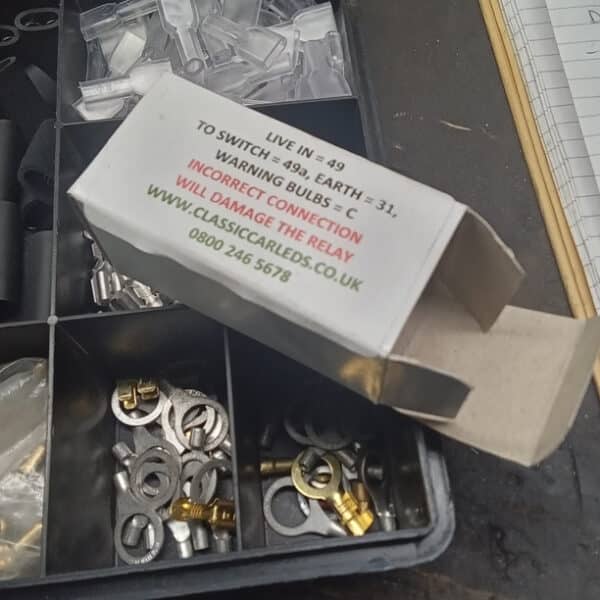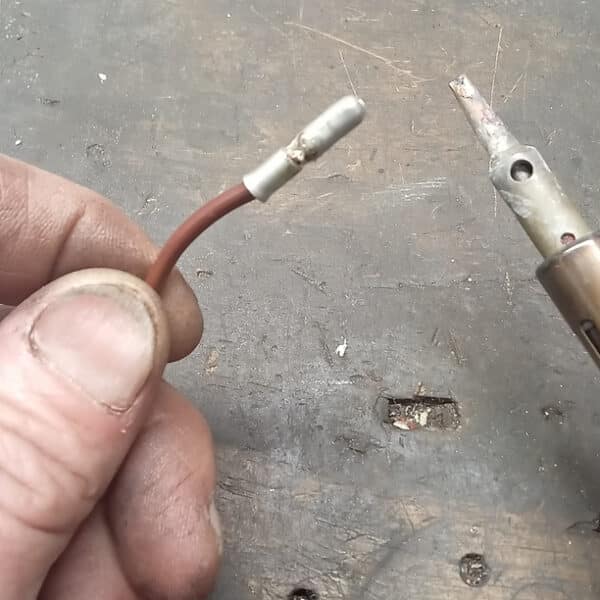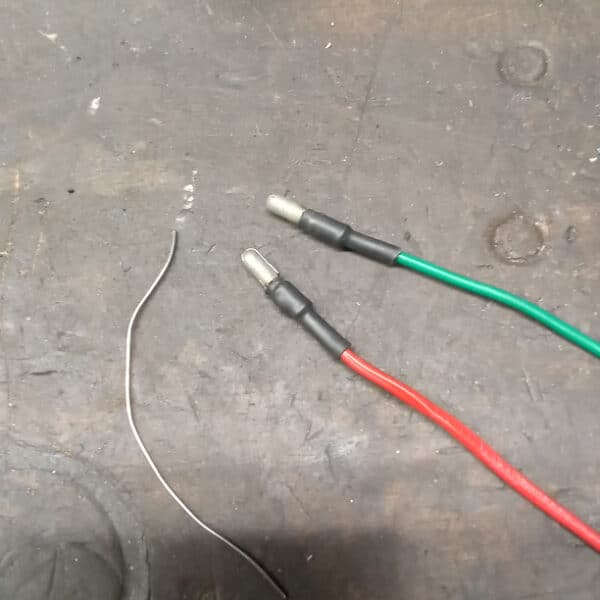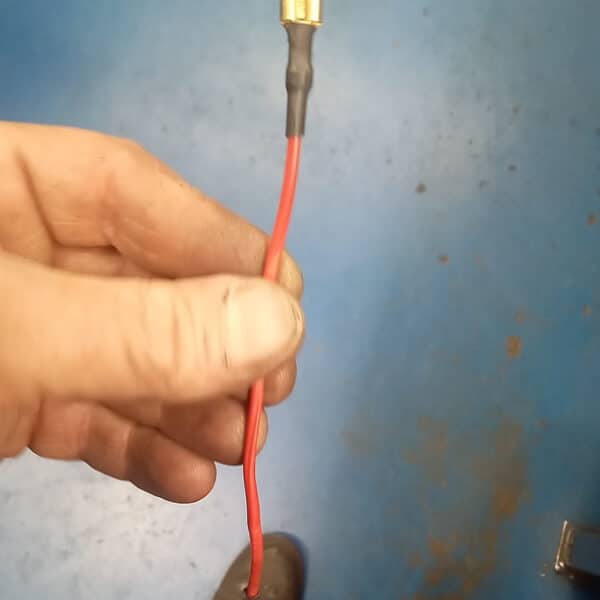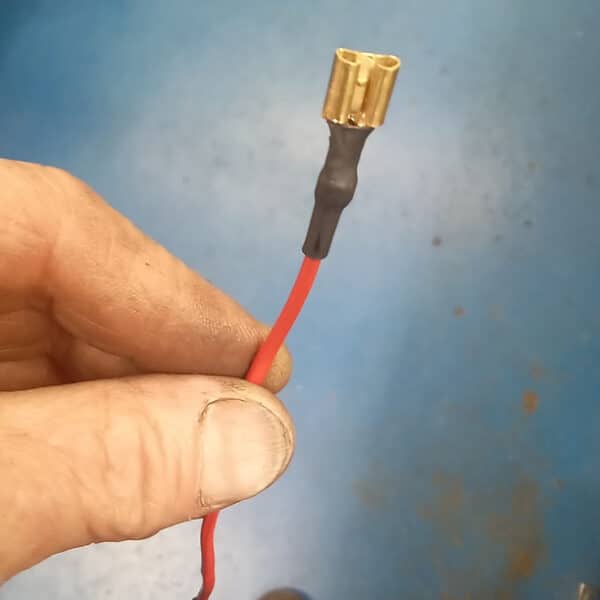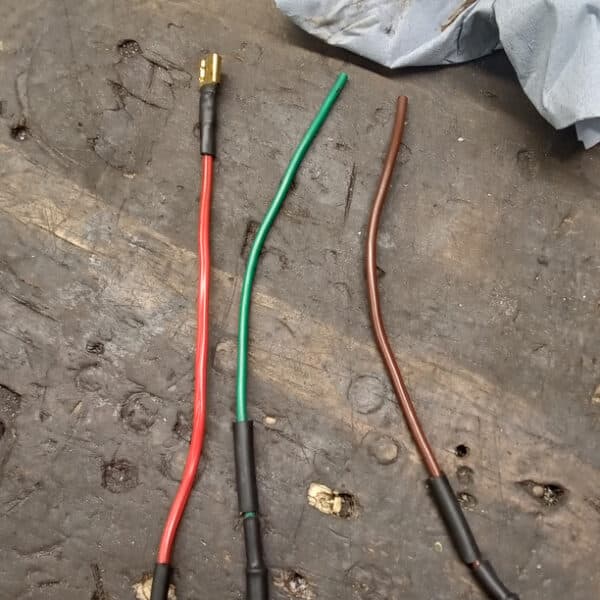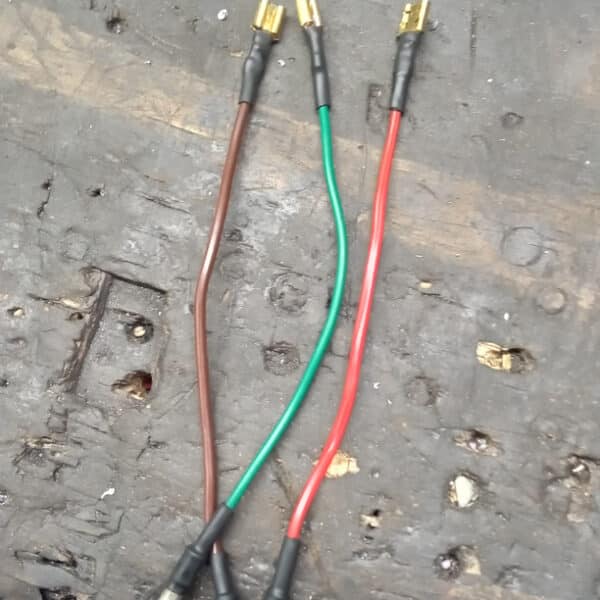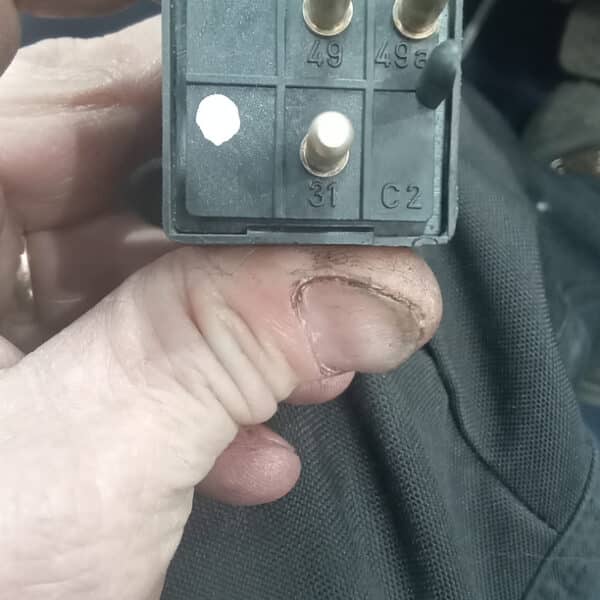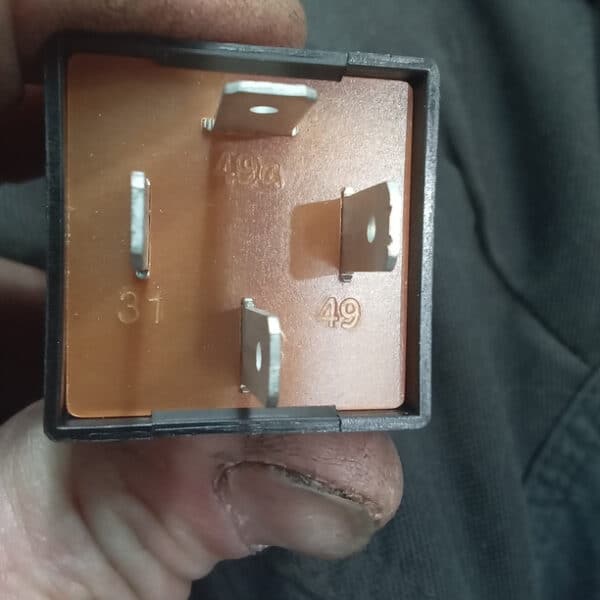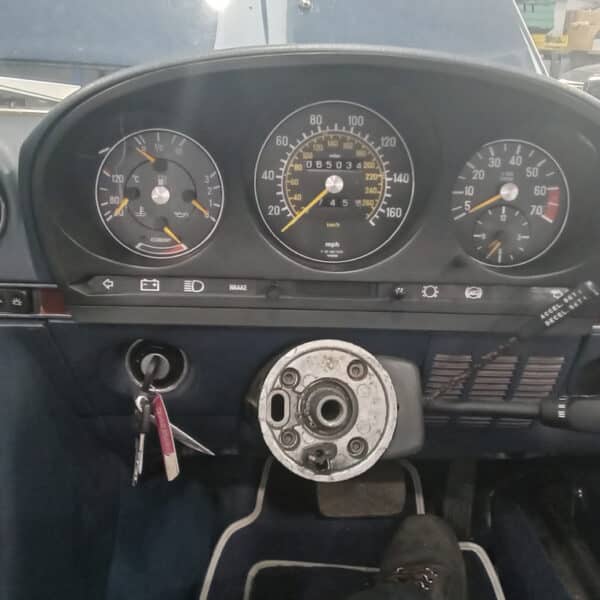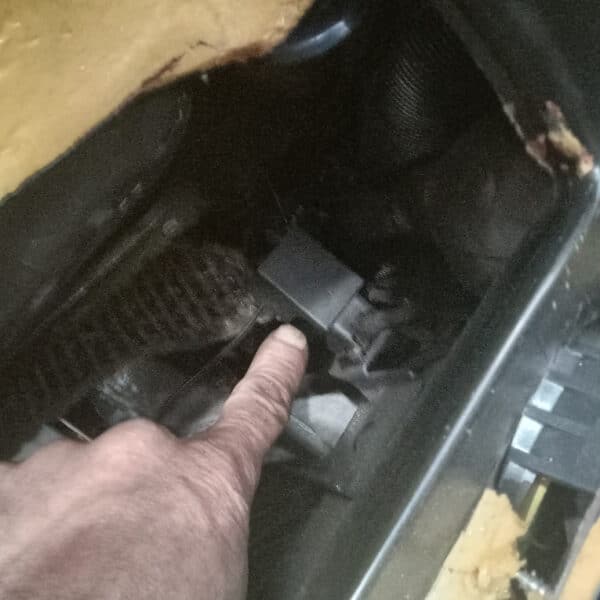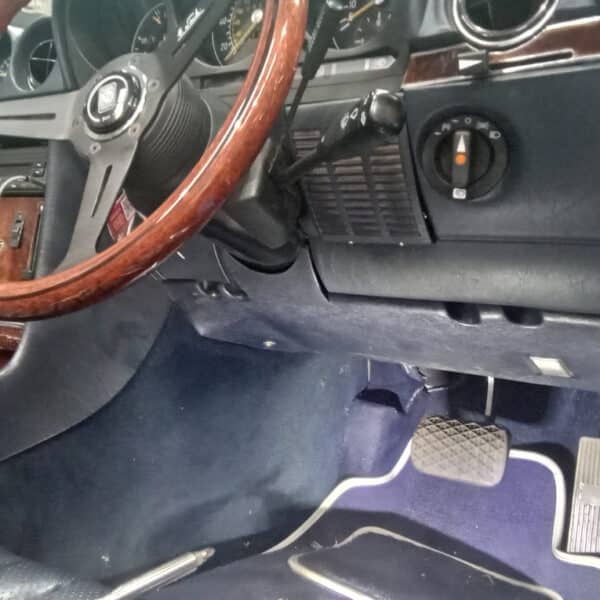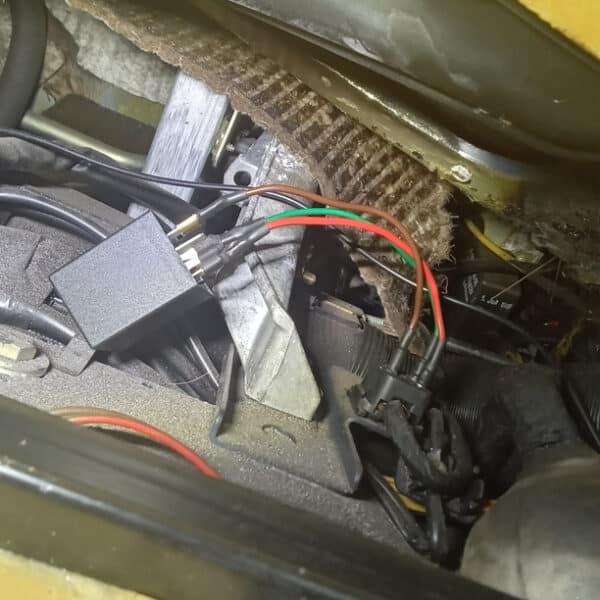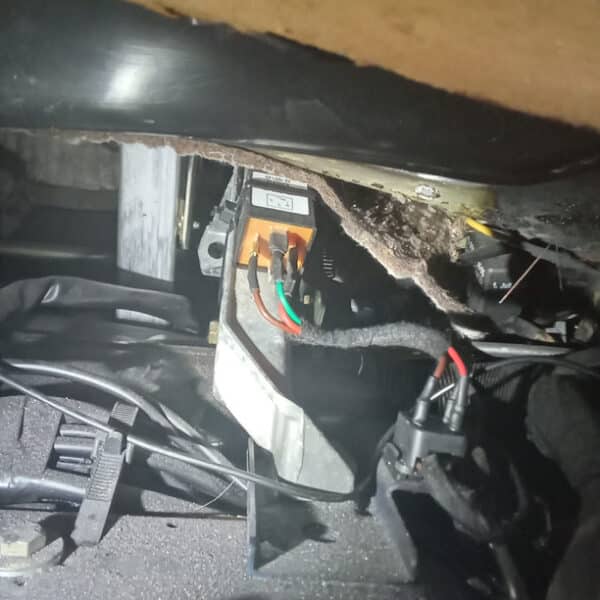Jon assessed the customer’s list of reported concerns on our 1985 Mercedes 500SL, starting with an engine misfire. After confirming that the engine was indeed misfiring, he carried out a visual inspection of the ignition leads and related components. He noted that Pete had previously fitted new spark plugs during an earlier visit. Upon investigation, Jon found the lead to cylinder 8 was loose, and the spark plug itself showed signs of corrosion on the terminal. The plug was removed, cleaned, and regapped. He also removed the plug from cylinder 6, cleaned and regapped it, and then installed it in cylinder 8 to check for any change. The cylinder 8 plug was fitted into cylinder 6 to allow easier access if the issue persisted. The HT lead was cleaned and refitted.
Despite these steps, the engine continued to misfire. Jon disconnected the leads at the distributor cap, as direct access to the spark plugs was restricted. Notably, removing the lead for cylinder 8 had no impact on the engine’s running condition, suggesting that cylinder was not firing. He then inspected the distributor cap and rotor, discovering the rotor was burnt at the end. To begin resolving the misfire, he ordered a new set of HT leads along with a new distributor cap and rotor, aiming to eliminate these components as potential causes. Both rocker cover gaskets were also found to be weeping, so replacements were ordered.
Jon also addressed the customer’s concerns about the indicators. All appeared to function correctly upon inspection, so he planned to discuss the specifics of the issue further with the customer. The car had been supplied with LED bulbs and an LED relay. He traced the relay’s location by removing the steering wheel and instrument cluster, finding it mounted behind the cluster on the dash frame. A test LED bulb was fitted to the nearside rear light, which operated correctly with the hazard lights but flashed too quickly when used with the indicators.
To resolve this, Jon fabricated a conversion loom to adapt the original Mercedes round pin relay socket to accept the new spade terminal relay. He cut three lengths of wire in red, brown, and green, soldered bullet terminals to one end and spade terminals to the other, and applied shrink wrap as required. The wires were connected accordingly, and the new relay was secured to the dash frame with a cable tie. Following successful testing, he proceeded to install the remaining LED indicator bulbs. The headlights were then removed to allow the installation of LED bulbs, after which the headlights were refitted. A final test confirmed all lighting was functioning correctly. The original relay and bulbs were bagged and set aside for the customer.
